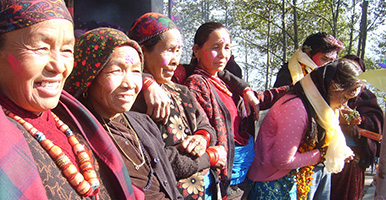Nepal and gender
Background to gender inequalities in Nepal
Nepal is a country characterised by persistent poverty, slow economic growth and wide differences in school attainment between girls and boys (Stash and Hannum, 2009). It has a population of over 27.47 million with 125 caste/ethnic groups recorded at the last census, 123 languages and ten religions with the Hindu caste being the dominant caste. Nepal, whilst socially, culturally and environmentally diverse, is one of the poorest countries in South Asia with a per capita income estimate ranging from $700 per head to $1,260 per head by different organisations (World Bank, 2013). It is ranked as 157th on the Human Development Index and despite economic growth absolute inequalities persist in Nepal with two out of three Nepalese people living in poverty (Human Development Report, 2013).
Inequalities plus the complexities of a Hindu dominated caste system and a ten year long Civil War tests this new and fragile democracy (Standing and Parker, 2011). (In February 1996, the leaders of the Maoist United People's Front began a violent insurgency with an aim to reform and restructure society and governance. The decade long (1996-2006) armed conflict affected the majority of Nepalese lives. Poverty and exclusion, particularly among marginalised castes and ethnic groups in rural areas, were key factors driving the decade-long insurgency.)
Women without land in rural areas, (such as Dalits who are also referred to by the collective term ‘traditional occupational caste’ or the so-called ‘untouchable’ class, or by their individual family name) are estimated at 12% of the population (Dalit Welfare Organization, 2010) and they are particularly socially and economically disadvantaged. Although legal restrictions based on a caste system have been abolished many discriminatory attitudes and practices persist to the detriment of Dalits, indigenous ethnic groups and women. It is a patriarchal society with a social culture that shapes gendered opportunities for women and girls. Gender inequalities are highlighted by the fact that it was only as recently as 2008 that women were noted to outlive men in Nepal. Nepal has made impressive moves towards a more gender equitable society despite a significant period of political instability.
The Asian Development Bank (2010) notes that “Nepal has taken progressive steps toward greater gender equality throughout the past five decades of planned development. Important legal amendments have been made to strengthen women’s rights in key areas such as citizenship, inheritance, and anti-trafficking”. Yet still there is gender based discrimination in all walks of life.



